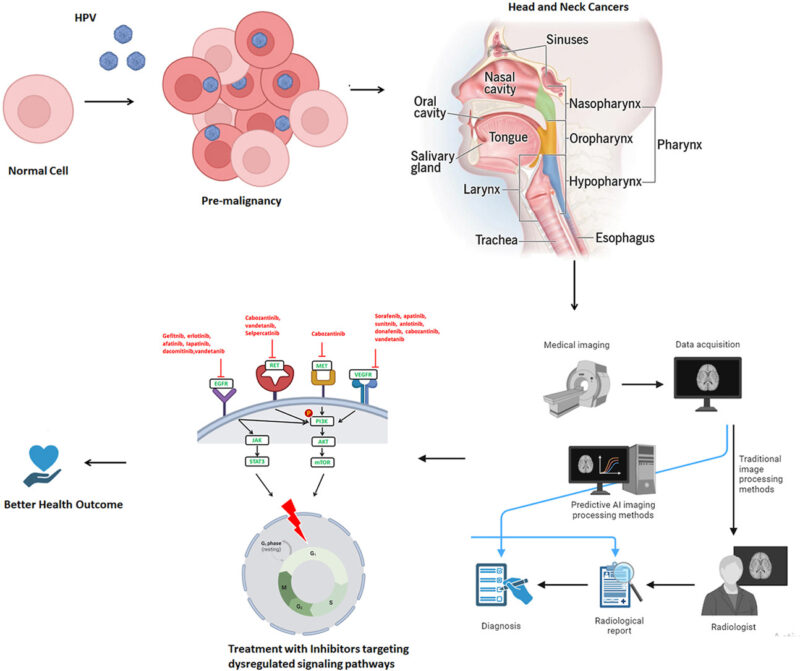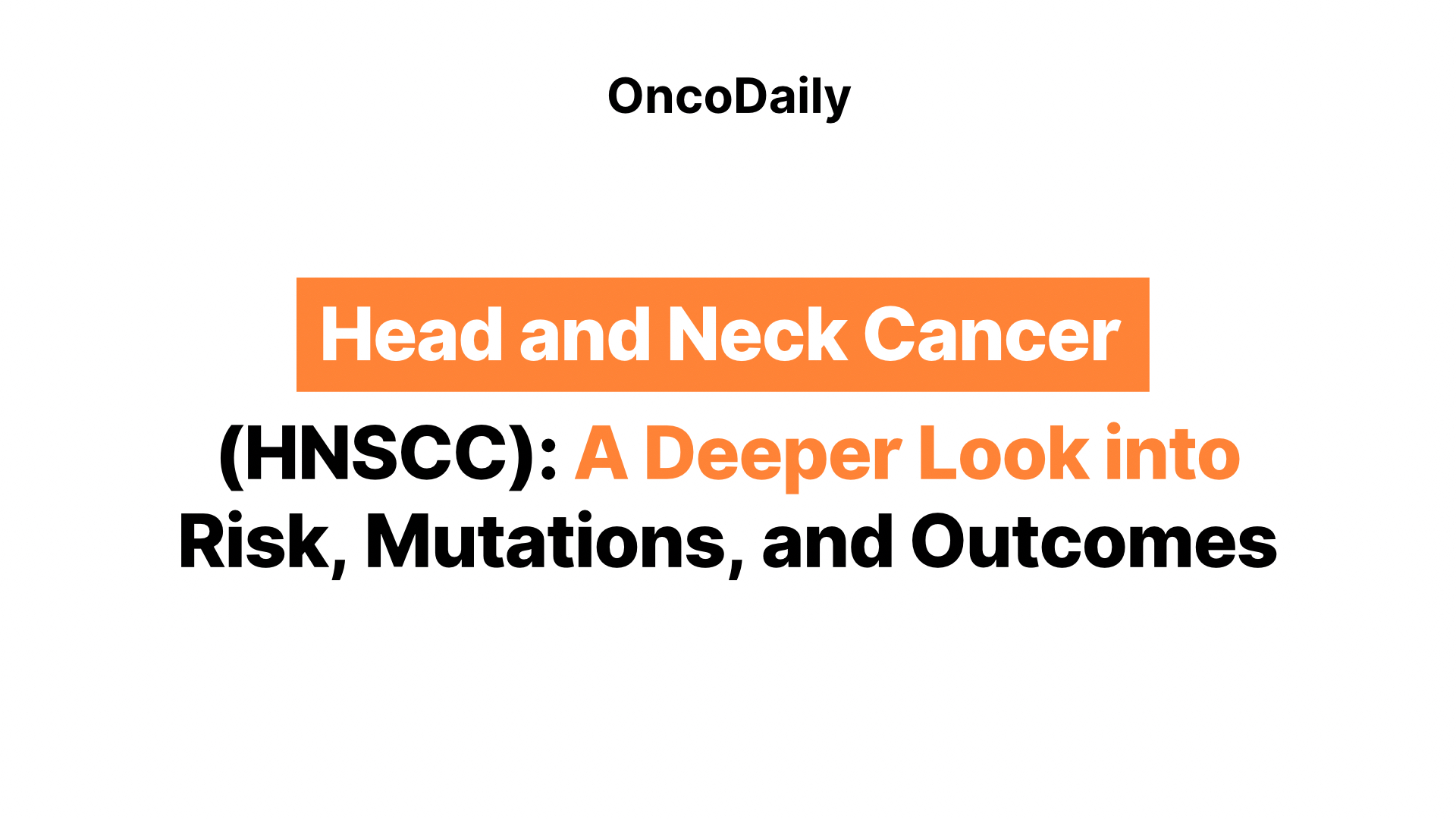Head and neck cancer (HNSCC) is tough—not just medically, but emotionally, physically, and financially. Treatments can be brutal, and even when people survive, they’re often left with lasting changes that affect how they look, speak, eat, or even just enjoy food. The ripple effect touches their work, relationships, and daily life.
But what if we could understand the disease better—at its core—and maybe even predict who’s most at risk or likely to have a tougher outcome?
🔍 The Clues Hidden in Our DNA
Cancer doesn’t just appear out of nowhere. It develops step by step, and every step leaves a mark—tiny changes in our DNA called mutations.
These mutations aren’t random. They’re influenced by things like:
-
Infection with HPV16 (a type of human papillomavirus)
-
Natural changes that happen as our cells divide and age
Each of these influences leaves a specific pattern—or signature—on the tumor’s DNA. Think of them like fingerprints of what caused the damage.

Photo from:- sciencedirect.com
What Did Researchers Discover?
Using data from two large studies—one from Heidelberg (HIPO-HNC) and another from The Cancer Genome Atlas (TCGA)—scientists looked closely at the tumor DNA from nearly 600 patients.
They found five major mutational signatures that kept showing up. And these weren’t just random—they were closely tied to things we already know increase cancer risk: tobacco, alcohol, and HPV16.
Patterns Within Patterns: What Do They Mean?
When researchers grouped the tumors based on their mutational patterns, they found four major subtypes. One of them, called Subcluster C2, stood out.
Why?
-
It had a high number of mutations linked to one signature in particular (Signature 16).
-
These tumors often had low levels of a protein called p16INK4A, which usually helps control cell growth.
-
Almost half of the tumors in this group were missing an important gene called CDKN2A—a red flag for aggressive disease.
And here’s the tough part:
People with tumors in this C2 group didn’t do as well. Their outcomes were worse, and their cancer was harder to treat.
Turning Data Into Real-Life Predictions
The researchers didn’t stop at identifying these patterns. They built a tool—a risk score—using statistical modeling (called LASSO-Cox regression) that could help predict how someone might do based on the type of mutations their cancer carries.
Imagine being able to say, early on:
“This patient has a high-risk signature—we need to treat more aggressively and follow more closely.”
That’s the power of genomics.
Let’s Talk About Tobacco
We can’t talk about head and neck cancer without talking about tobacco.
-
Up to 80% of new HNSCC cases are linked to smoking and alcohol.
-
If you smoke, your risk is about 10 times higher than someone who never did.
For centuries, tobacco was just part of life. But in the last 60–70 years, we’ve come to understand how harmful it really is. Nitrosamines and other chemicals in tobacco damage DNA, causing changes that can lead to cancer.
The good news? In some places, awareness and regulation are helping people quit and cutting down new cases. But the job’s far from done. Tobacco is still a huge driver of cancer around the world.
Studies like “The Complexity of Tobacco Smoke-Induced Mutagenesis in Head and Neck Cancer” shed light on how tobacco-related mutations drive tumor development, emphasizing the urgent need for prevention and harm reduction efforts.
Why This Matters
This kind of research shows us how much we can learn by looking at the genetic fingerprints of cancer. It’s not just academic—it’s practical. It can help us:
-
Understand what causes cancer
-
Predict who’s most at risk
-
Personalize treatment strategies
-
Support efforts in prevention, especially when it comes to tobacco use
Final Thoughts
Head and neck cancer can be a life-altering diagnosis. But thanks to cutting-edge research, we’re starting to read the story it tells through DNA. These insights are helping us take smarter steps—not only in treatment, but also in how we prevent the disease in the first place.
And that’s a future worth working toward.
For more insights, explore OncoDaily‘s article “How tobacco smoking contributes to development of cancers of the head and neck“.
by :- Md Foorquan Hashmi, MD, Sr. Editor, OncoDaily: India Bueura
